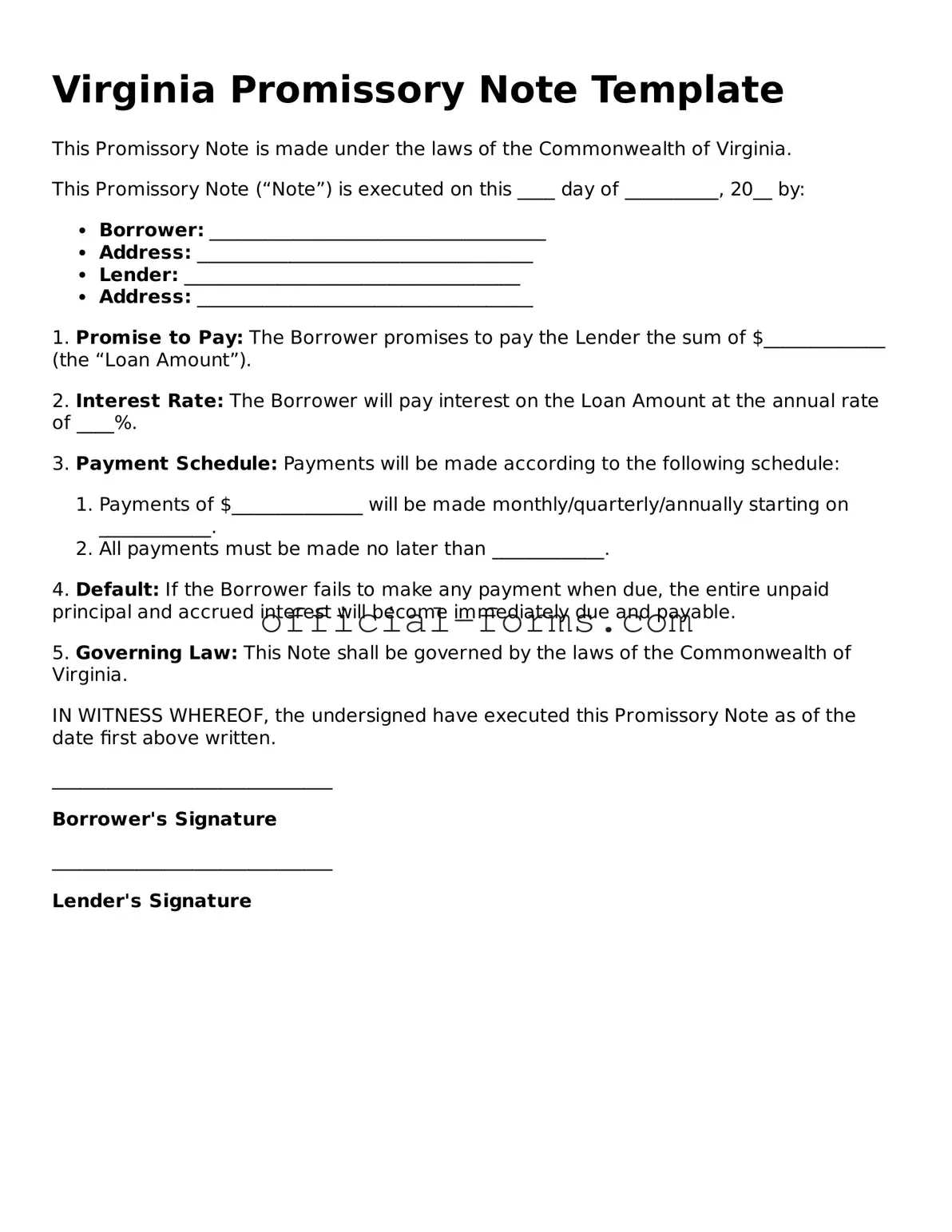Filling out a Virginia Promissory Note form can be a straightforward process, but many individuals make common mistakes that can lead to complications. One frequent error is failing to include the correct date. The date signifies when the agreement takes effect, and omitting it can create confusion about the timeline of the loan.
Another common mistake is not providing accurate names and addresses for all parties involved. It is essential to clearly identify both the borrower and the lender. Incomplete or incorrect information can lead to disputes later on, complicating the enforcement of the note.
People often overlook the importance of specifying the loan amount. While it may seem obvious, a missing or incorrect figure can lead to misunderstandings. Clarity in this area is crucial to ensure that both parties have the same expectations regarding repayment.
Additionally, individuals sometimes forget to outline the terms of repayment. This includes the frequency of payments, the due date, and any applicable interest rates. Without clear terms, the borrower may find themselves confused about when and how much to pay, leading to potential default.
Another mistake is neglecting to include any late fees or penalties. If the borrower fails to make a payment on time, the lender should have a clear understanding of the consequences. Failing to specify these terms can lead to disputes and frustration.
Some individuals also make the error of not having the document signed by both parties. A promissory note is only enforceable if both the borrower and lender agree to its terms. Ensure that signatures are present to validate the agreement.
People may also forget to have the document witnessed or notarized, depending on their specific needs. While not always required, having a witness or notary can provide additional security and legitimacy to the agreement.
In some cases, individuals may fail to keep a copy of the signed note for their records. It is vital for both parties to retain a copy of the agreement. This can serve as a reference point in case any issues arise in the future.
Finally, a lack of attention to detail in reviewing the completed form can lead to errors. Before submitting the form, take the time to read through it carefully. This simple step can prevent many of the mistakes mentioned above, ensuring a smoother transaction.
